Swimming professors, entrepreneurs who built on their personal reputations to create careers for themselves, were critically important in developing aquatic activities during the Victorian period. The teaching of swimming was a substantial part of the activities of swimming professors because teaching provided a regular source of income but what distinguished professors from other teachers of swimming was the breadth of their activities. In addition to teaching, they competed against each other, they performed swimming feats for the public, promoted swimming events, and presented prizes. As teachers, inventors, promoters, and entrepreneurs, these men assumed responsibility for the progress of the sport, since their financial success depended on its expansion. The existing literature on swimming professors has primarily addressed those living in London,[1] or those like George Poulton who were born in London. and others who travelled abroad to earn a living such as William Gore and Charles Holroyd.[2] The expansion of swimming, however, led to the emergence of swimming professors all around the UK and this article looks at the life and career of Birmingham professor John Bates, who was born on 20 February 1856 in Bath, Somerset (Fig. 1).
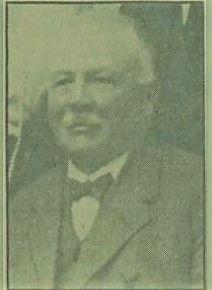
Figure 1. Professor Bates
Source:Evening Despatch Friday 29 December 1939, 8.
In 1861 John was living at 15 Mary Ann Street, St Paul, Hampton, Birmingham with his grandfather and father, both chair makers,[3] and ten years later he was living with his father, mother, siblings and grandparents at 91 Livery Street in the same district.[4] On 17 January 1875 John, a ‘Cabinet Maker’ living at 23 Lodge Road married nineteen-year-old Eliza Leonard, a ‘Jeweller’ (who was unable to write given that she signed with a mark) then living a few doors away at 15 Lodge Road.[5] By 1881, John, whose occupation was shown as ‘Professor of Swimming’, was living with Eliza, now a French Polisher, and their daughters four-year-old Mary Elizabeth (referred to by her more commonly used name of Lizzie from now on) and ten-month-old Mary Ann at 88 Livery Street.[6] At the baptisms of son John in September 1884, daughter Beatrice May in March 1886, and daughter Lily in April 1888, John signed himself as a ‘Cabinet Maker’,[7] although he was still heavily involved in swimming. One newspaper report of 1884 noted that ‘Professor Bates (champion swimmer)’ had won more ‘prizes for natatory accomplishments’ than anyone and that in May he had received a ‘magnificently painted portrait of himself (by Howlett) as a gift from the local swimming club where he was instructing’.[8]
At a Grand Swimming Fete held in the boating pool at the Aston Lower Grounds on August 16 1886, ‘Professor Bates’ was the handicapper for the amateur 100 yards Open Handicap and at the end of the afternoon this ‘Champion of the Midlands’ was advertised as swimming against Jack Haggerty over 200 yards for the ’Championship of the World’.[9] After his death, writers noted that the events had been arranged on behalf of the Captain Webb testimonial fund but this was not evident in contemporary reports. One recalled that the event provided a typical example of the Professor’s showmanship. He widely advertised that he would dive in the pool and bring out a live fish but, unfortunately for him, the way the stunt was to be worked – by tying a fish on to a stake stuck at the bottom of the pool, the whereabouts of which was known to him – leaked out. Haggerty, or his friends, removed the fish before the event took place and Bates had to come up without it. [10]
When the Birchfield Gymnasium Swimming Club held their first annual sports under the rules of the newly-formed Amateur Swimming Association (ASA) on Wednesday 28 September 1887 at the Northwood Street Baths ‘Professor Bates and Pupil’ provided the entertainment and John acted as both starter and handicapper for the Open Handicap over 120 yards, the Open Novice Handicap over 80 yards, and the Members’ handicap over 40 yards. There was also a polo match between Edgbaston Aquatic Polo Club and Birchfield Gymnasium Swimming Club. Reflecting the increasing amateur influence within the sport, the rules stipulated that all events had to be competed for in dark ‘University’ costume with short sleeves, in addition to drawers.[11] A Ladies Race over 40 yards had been advertised but it did not materialise. The Dart observed that whatever the cause, ‘whether through shyness or because it is not yet the fashion for ladies to exhibit their prowess in this particular line in public’, many people were dissatisfied and in future the committee should ‘make quite sure of the ladies’ before they are announced to appear.[12]
At the baptism of son William in April 1890 John described himself as a ‘Professor of Swimming’,[13] although the 1891 census shows him as a ‘Furniture Dealer’ living at 88 Livery Street with wife Eliza and daughters Lizzie and Mary Ann along their siblings, Edith (9), John (6), Beatrice (5), Lilly (3) and William (11 months). John’s father, mother and other members of his extended family were still at 91 Livery Street.[14] In August 1892, John gave his ‘wonderful Aquatic Entertainment’, assisted by members of Birmingham swimming clubs,[15] and he appeared in a water carnival at the Winter Garden at the end of the month, an event that attracted over eighty competitors for valuable prizes as well as including Professor Bates’ fancy swimming, comic water scenes, and ladies competitions.[16] When the first annual entertainment of the Aston Old Edwardians Swimming Club took place at the Aston Baths on Thursday 26 July 1894, John officiated as handicapper and starter. During an interval, son John, aged seven, gave an ‘extremely clever aquatic entertainment’, which was much appreciated. Events included a boys race over twenty-six yards for scholars attending any of the King Edward VI schools, a fifty-two yards handicap for any amateurs living in Aston, a fifty-two yards ladies handicap, in which Lizzie finished second of eight competitors, swimming off 20 secs, a ‘Royal Mail’ race, and a polo match between the Birmingham Leander S.C. and the Birmingham Suburban S.C..[17]
These events were not always profitable affairs. On Wednesday 14 June 1895, the Professor, accompanied by Lizzie and John gave an aquatic entertainment in Lichfield, during which they exhibited plunging (various styles), high dive, breaststroke, side-stroke, over arm stroke, one arm and one leg, no arms, swimming underwater, like a dog (large dog), like a puppy dog, spinning like a top, swimming on a chair, swimming like a crab, swimming like a fish, singing ‘Daisy’ underwater, standing on the hands underwater, ditto on one hand, walking on the hands, pushing across the baths, sculling backwards and forwards, imitation of a seal, ditto porpoise, diving for plates, floating (various styles), ‘Jack in the Box’, Christian martyr etc. An exhibition of the best method of saving life in the case of drowning ‘proved highly interesting and instructive’. John, described as ‘the smallest swimmer in the world’ performed some clever feats for which he was loudly applauded but unfortunately for the Professor only fifty to sixty people attended, resulting in his losing about £5 on the event.[18]
In 1897, John described himself as a ‘Teacher of Swimming’ at the baptism of daughter Rose[19] and when the tenth annual sports of the Birmingham Y.M.C.A. Swimming Club took place on Monday 20 September 1897, the ‘Bates’ Troupe’ gave an interesting exhibition, the feat attracting most applause being that of Lizzie singing ‘Daisy’ while under the water.[20] Earlier that year she had been reappointed as swimming instructress to the Aston School Board.[21] Reports of a fatal boating accident at Douglas in August 1898 noted that the only survivor was ‘Miss M.L. Bates’ who had been able to swim to a rock and make her way to shore following two hours in the water despite ‘being encumbered’ by her walking dress and a tightly buttoned mackintosh. It was not clear initially which ‘Miss Bates’ this was since the two eldest Bates sisters were both talented swimmers[22] but it turned out to be Lizzie. Among the drowned was her ‘sweetheart’ Frederick Hare, a twenty-three-year-old scale maker and a member of the Westminster Swimming Club who had won several prizes. Professor Bates had reason to be proud ‘not only of his daughter’s skill in the art he has taught so long, but of the phenomenal fortitude she displayed’. For the Owl, the incident was a ‘striking illustration of the value of training in swimming, of which art Miss Bates has been a well-known exponent since her tenderest years.’ At that stage she was a teacher of swimming to the Aston Manor District Council, the Aston School Board, the Walsall Ladies S.C., and the Marston Green Homes (Fig. 2).[23]
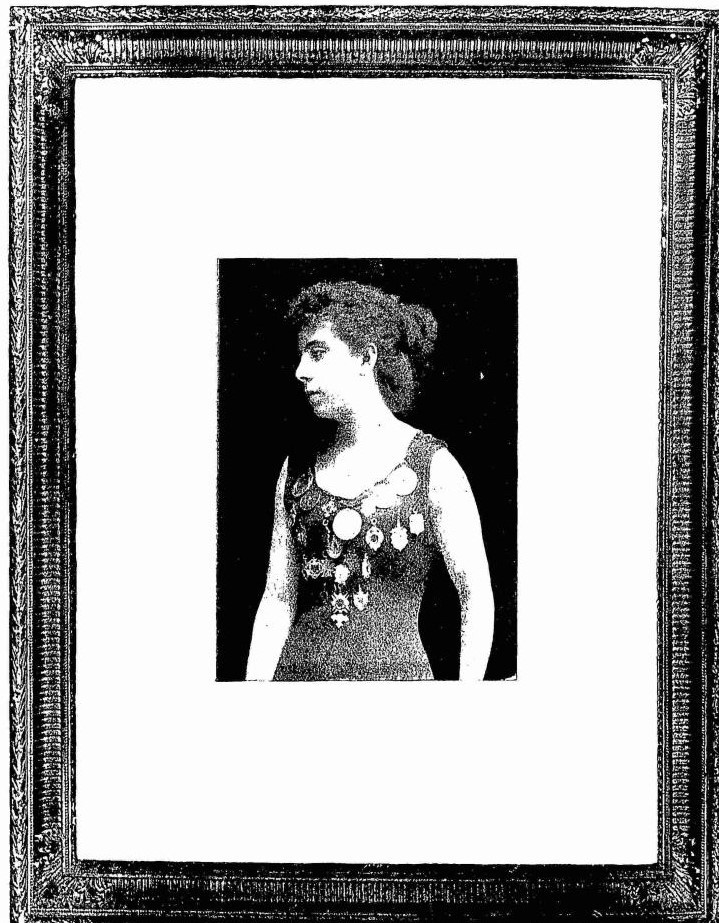
Figure 2. Miss M.L. Bates
Source: The Owl, Friday August 12, 1898, 8.
Interviewed subsequently about her experience Lizzie said that she ‘realised the value of the training my father Professor Bates has given me in long-distance sea swimming’, and she ‘received from all parts letters of congratulations on her marvellous escape and of sympathy with her in her bereavement’.[24] As The Owl had noted, after this display of her ‘mastery of the art, there will probably be a great increase in the number of ladies anxious to avail themselves of her services as an instructor’,[25] and the publicity from this tragedy proved useful to the Bates family, at least in the short term. When the Professor and Lizzie were engaged to appear in Gloucester only a month later, on Monday 26 September 1898, the local press made much of her having survived the disaster. On this occasion there was a ‘crowded attendance’ who watched their display of fancy and ornamental swimming, which lasted for half an hour and was as ‘varied as it was interesting’ with singing under the water, waltzing, and ‘jack-in-the-box’ being particularly appreciated.[26]
In the 1901 census, twenty-four-year-old self-employed ‘Teacher of Swimming’ Lizzie. was still living with her father John, also a self-employed ‘Teacher of Swimming’, and her seven younger siblings, although they had moved to Gothic House, Henrietta Street, St George, North Birmingham.[27] Father and daughter were now established as well-respected swimming instructors and when the government inspector visited Marston Green Homes he commented ‘in the highest terms’ on the efficiency of both boys and girls in swimming under their tuition. One reporter noted that it was something of an anomaly that the ‘little foundlings and deserted children under the care of the Birmingham Guardians should have the best professional instructors’.[28] It was also noted that the boys at King Edward’s School, Fiveways, were making good progress under instruction from the Professor who was working with them for second successive year.[29]
John and Lizzie exhibited at a gala in Walsall in September 1900,[30] but, despite her expertise and widespread reputation, when Lizzie married engraver Charles Frederick Horton on 6 April 1901 her occupational status was left blank,[31] an example the way in which women’s work was frequently omitted from official documentation, not least because it was assumed by the men filling in forms that women would give up outside work on marriage to concentrate on the home. As the Sports Argus inadvertently put it, ‘Well-known lady swimmer married today. Miss Lizzie Bates becomes Mrs Horton’.[32] It is not clear whether or not the newly-married Lizzie appeared with the professor and his ‘troupe of lady swimmers’ a month later when they gave two entertainments, in front of around 1,500 spectators on both occasions, at the opening of the new baths at Stourbridge but her torch was being carried by sister Edith who had been appointed as swimming mistress to the baths.[33] However, when twenty-three-year-old Edith married barman Arthur Williams on 5 August 1906 once again her occupational status was left blank.[34]
Lizzie and Charles, then living at 40 Brunswick Road, had a son, Leslie Charles, on 19 July 1902,[35] so presumably she was out of action for a while. At the Y.M.C.A.S.C. swimming sports at Kent Street Baths on 22 September 1902 ‘Professor and Miss Bates’ were included in the programme but it is not obvious which daughter this might have been.[36] What is clear is that Lizzie was back in the pool by 1908 when she and the Professor gave an exhibition of scientific and fancy swimming at the Mosely Swimming Club Sports at Moseley Road Baths on Friday 11 September.[37] By this point, John had taken to working with Channel swimmers, much like his contemporary Walter Brickett in London, since this remained a useful income for professionals. In July 1904, he was training Montagu Holbein for another attempt on the Channel and at the same time advising Frank Holmes, the ‘Birmingham amateur swimmer’ who was also making another attempt,[38] and all three were together on the South Coast on Wednesday 17 August 1904. Holbein had apparently improved his speed under John’s tuition and was expected to tackle the Channel as a much more skilful swimmer than previously but the weather at Dover was very rough and the captain of the boat to accompany Holbein considered that he would have little chance of success so the attempt was postponed.[39]
By 1911, only Lilly (23), William (20) and Rose (14) remained at home with fifty-five-year-old John, self-employed ‘Teacher of Swimming’, and his wife Eliza at their new address at 81 Murdock Road, Handsworth, Birmingham.[40] Adverts for swimming lessons conducted by Professor and Lizzie in 1911, costing 8s 6d for six lessons with ‘success guaranteed’, advised ladies to contact 119 Antrobus Road and gentlemen to contact 81 Murdock Road.[41] During the First World War, the ‘expert teachers’ the ‘Misses Bates’ were giving swimming lessons for ladies, details available from Lizzie at 119 Antrobus Road,[42] and between August 1915 and September 1916, John was advertising lessons given by himself and daughter Rose with details available at the Kent Street Baths or from his home in Murdock Road.[43] On several occasions during the first part of the twentieth century, until his death in December 1939, John advertised his services in the Midlands Trade Directory, as a ‘Teacher of Swimming’ in 1904 and 1912 and as a ‘Professor of Swimming’ in 1932, giving Murdock Road as his contact address.[44] When Rose and Lilly both married in 1920, Rose to farmer Harry Craig on 3 April and Lilly to toolmaker Frank Audley on 22 May, John was noted at a ‘Professor of Swimming’ although, as with their sisters previously, neither woman had an occupation recorded.[45] In December 1928, ‘Professor Bates of Handsworth’, who had been teaching swimming for fifty-six years, was entertained by fifty of his children, grandchildren, and great-grandchildren in celebration of his seventieth birthday (Fig. 3).[46]
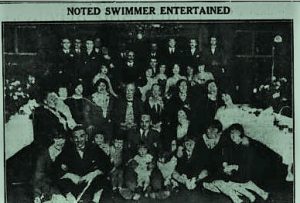
Figure 3. Noted Swimmer Entertained.
Source: Birmingham Daily Gazette Friday 28 December 1928, 3.
By the time the 1939 register was compiled John had retired and was still living at 81 Murdock Road with wife Elizabeth and son William, a general manager for a foundry, and daughter Mary Ann Allcott, who was taking responsibility for the running of the house.[47] In late December, the Professor, who was described as having been swimming instructor at Kent Street Baths for over 30 years, where he had taught ‘many thousands of Birmingham people to swim’, died in Claremont Nursing Home, South Road, Hockley, aged 84,[48] and his funeral took place at Handsworth New Cemetery at noon on New Year’s Day.[49]
Following his death, one commentator recalled watching ‘Professor’ ‘Jacky’ Bates, who had been quite a character in the Birmingham swimming world in its early days, giving instruction in the small teaching bath at Kent Street before the Baths were rebuilt. [50] Another retrospective observed that he had had a ‘remarkable career of public usefulness as a swimming instructor’ and that for close on sixty years he had been a painstaking teacher of pupils of all ages, ‘from tiny toddlers learning to swim almost as soon as they could walk, to grey-haired men and women’. Among the young people he taught were those of King Edward’s School, the Blue Coat School, the Deaf and Dumb Institution, and the Royal Institution for the Blind. A keen cyclist and footballer, who had been forced to retire after suffering a knee injury, he had been a regular attendee at Aston Villa and West Bromwich Albion matches and a patron of boxing and ‘all manly sports’ (Fig. 4). He left a widow, two sons, five daughters, grandchildren, and great grandchildren, all of whom, except the very young, were or had been swimmers.[51]
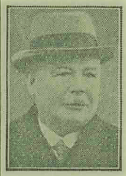
Figure 4. Mr John Bates
Source: Birmingham Mail Friday 29 December 1939, 8.
Being a swimming professor meant doing much more than teaching, however, and John had spent much of his working life following the traditional routes for professors, taking part in water scenes in pantomime, and giving displays and exhibitions of fancy and trick swimming throughout the country in conjunction with his children, although John gave up assisting his father in order to be reinstated as an amateur. In his advertising he drew on his competition record of winning more than 400 prizes and when he appeared for twenty-six weeks in a circus in Corporation Street, he was being styled the ‘champion diver of the world’. He had supposedly been an ‘associate of Captain Webb and other famous swimmers’, accompanying Webb as manager on his English tour following his Channel success, and he had been with ‘Monty’ Holbein when he spent twenty-two hours in the Channel trying to get across to the French coast. As was typical of swimming professors, especially in the days before the ASA was firmly established and had begun marginalising swimming professionals like John, he took on the role of club instructor, being with Birmingham Leander Club from the start, as well acting as an official. He was a well-known handicapper, in fact the only one in the Birmingham District at the time and knew the times of all the swimmers so accurately that he was rarely wrong, although he had a singular method of starting races. Jack would have the programme in front of him with the names of the competitors and their allotted starts; he would put the swimmers in their positions and then stick little pieces of stamp paper against the five, ten etc. He would give the command ‘Go’ and would not count aloud but when the second hand reached the five, he would shout ‘Go’ again and so on. It caused a lot of early and late starts and, reflecting the way in which swimming had changed into a highly regulated totally amateur-controlled sport by 1940, the writer concluded that ‘It wouldn’t do today.’ [52]
Article © of Prof Dave Day
References
[1] Dave Day, (2011). Kinship and Community in Victorian London: the “Beckwith Frogs”. History Workshop Journal 71(1), 194-218; Dave Day, (2010). London Swimming Professors: Victorian Craftsmen and Aquatic Entrepreneurs. Sport in History 30(1), 32-54.
[2] See multiple examples in Dave Day and Margaret Roberts, (2019). Swimming Communities in Victorian England (London: Palgrave Macmillan)
[3] 1861 Census RG 9/2152 Schedule No. 158. 15 Mary Ann Street, St Paul, Hampton, Birmingham.
[4] 1871 Census RG10/3113 Schedule No. 57. 91 Livery Street, St Paul, Hampton, Birmingham.
[5] Births, Marriages and Deaths.
[6] 1881 Census RG11/3011Schedule No.19. 88 Livery Street, St Paul, Hampton, Birmingham.
[7] Baptism Register. Parish Church St Paul Birmingham, 1884, 1886, 1888.
[8] Feathers. The Owl Wednesday May 28, 1884, 7.
[9] Adverts. The Dart. A Journal of Sense and Satire Friday August 12, 1886, 14. Swimmers continued to prefer swimming for ‘Championships’ in open water rather than in Baths even after the number of indoor facilities increased.
[10] Water Rat. A ‘Fishy Story. About an Old Birmingham Personality. Sports Argus, Saturday 13 January 1940, 2; ‘Professor Bates’. Death of Swimming Personality. Long Association with Birmingham. Birmingham Mail Friday 29 December 1939, 8.
[11] Notelets. The Dart, The Midland Figaro, Friday, September 23, 1887, 8.
[12] Before the Footlights. The Dart. A Journal of Sense and Satire Friday September 30, 1887, 15.
[13] Baptism Register. Parish Church St Paul Birmingham, 1890.
[14] 1891 Census. RG12/2401 Schedule No.37. 88 Livery Street, St Paul, Hampton, Birmingham.
[15] The Dart. A Journal of Sense and Satire Friday August 19, 1892, 14.
[16] Advert. Venice in Birmingham. Winter Garden. The Dart. A Journal of Sense and Satire Friday August 26, 1892, 8.
[17] Birmingham Daily Post, Friday 27 July, 1894, 8.
[18] Lichfield Mercury, Friday 14 June 1895, 5.
[19] Baptism Register. Parish Church St Paul Birmingham, 1897.
[20] The Birmingham Pictorial and Dart, Friday September 24, 1897, 8-9.
[21] What We Hear. The Dart. A Journal of Sense and Satire Friday April 16, 1897, 11.
[22] Swimming and Water Polo Walsall Advertiser – Saturday 06 August 1898 Pg 6
[23] The Manchester Guardian Aug 3, 1898 pg. 4; Boating Fatality at Douglas. Ludlow Advertiser, Saturday 6 August 1898, 7; The Owl Birmingham, Friday August 12, 1898, 14.
[24] The Manx Boating Disaster. Miss Bates’s Swim for Life. Dundee Evening Telegraph Wednesday 10 August, 1898, 2.
[25] The Manchester Guardian Aug 3, 1898 pg. 4; Boating Fatality at Douglas. Ludlow Advertiser, Saturday 6 August 1898, 7; The Owl Birmingham, Friday August 12, 1898, 14.
[26] Aquatic Display in Gloucester. Gloucester Citizen, Tuesday 27 September 1898, 3.
[27] 1901 Census RG13/2842 Schedule No.33. Gothic House, Henrietta Street, St George, North Birmingham.
[28] Swimming. Sports Argus Saturday 2 June 1900, 2.
[29] Swimming. Sports Argus Saturday 9 June 1900, 2.
[30] Swimming. Sports Argus Saturday 29 September 1900, 2.
[31] Births marriages and deaths
[32] Short Passes. Sports Argus Saturday 6 April 1901, 1.
[33] Swimming Notes. Sports Argus Saturday 25 May 1901, 4.
[34] Births Marriages and Deaths.
[35] Baptismal records, Handsworth, Staffordshire, 1902, 78.
[36] To Our Readers. Sports Argus Saturday 20 September 1902, 6.
[37] Moseley S.C. Sports. Birmingham Daily Gazette Saturday 12 September 1908. 8.
[38] Sporting Items. Birmingham Mail Tuesday 12 July 1904, 4.
[39] The Channel Swim. Holbein’s Attempt Postponed. Birmingham Mail Thursday 18 August 1904, 3.
[40] 1911 Census. 81 Murdock Road, Handsworth, Birmingham.
[41] Public Notices. Birmingham Mail Tuesday 18 July 1911, 1.
[42] Public Notices. Birmingham Mail Saturday 31 July 1915, 1.
[43] Public Notices. Birmingham Daily Gazette Thursday 26 August 1915, 4; Wednesday 6 September 1916, 4.
[44] 1904 John Bates Prof of Swimming Midlands Trade directory, 481; 1912 John Bates Prof of Swimming Midlands Trade dir; 1932 John Bates Prof of Swimming Midlands Trade Dir.
[45] Births Marriages and Deaths. The Parish Church, St James, Handsworth, Stafford.
[46] Noted Swimmer Entertained. Birmingham Daily Gazette Friday 28 December 1928, 3.
[47] 1939 Register. QCGI. Birmingham. 384/1.
[48] Professor Bates. Evening Despatch Friday 29 December 1939, 8; Sports Argus Saturday 30 December 1939, 2.
[49] ‘Professor Bates’. Death of Swimming Personality. Long Association with Birmingham. Birmingham Mail Friday 29 December 1939, 8.
[50] Water Rat. A ‘Fishy Story. About an Old Birmingham Personality. Sports Argus, Saturday 13 January 1940, 2.
[51] ‘Professor Bates’. Death of Swimming Personality. Long Association with Birmingham. Birmingham Mail Friday 29 December 1939, 8.
[52] ‘Professor Bates’. Death of Swimming Personality. Long Association with Birmingham. Birmingham Mail Friday 29 December 1939, 8; Water Rat. A ‘Fishy Story. About an Old Birmingham Personality. Sports Argus, Saturday 13 January 1940, 2.

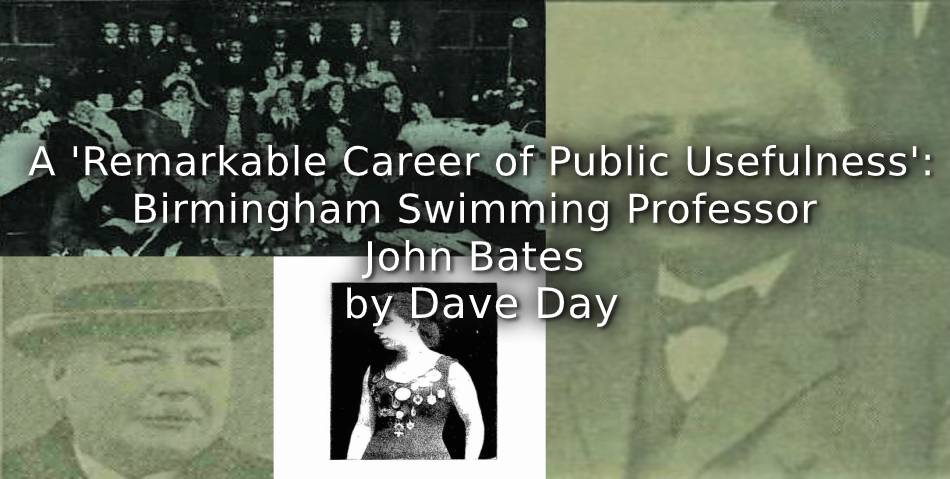
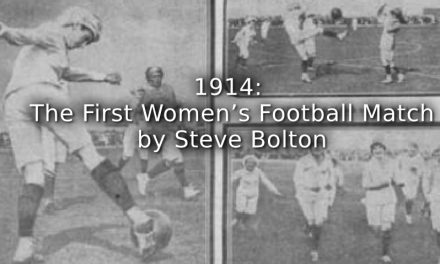
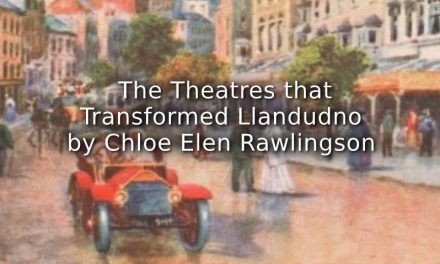
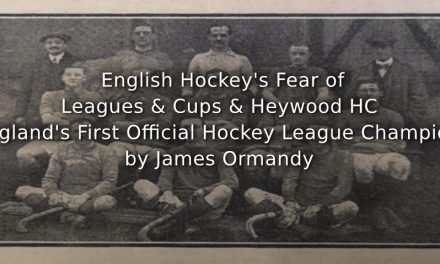
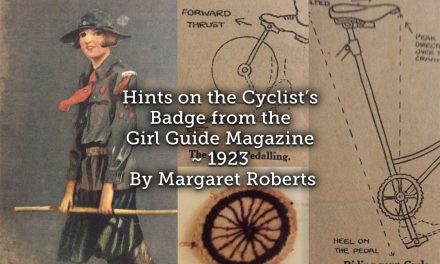
Thank you for finding out about my Great Grandfather, quite a lot of it I did no. My Grandmother was Edith and she used to tell me about teaching death and dumb people to swim whilst she had me lying across a chair teaching me how to do Breast stroke,
Auntie Rose always fascinated me as I was told that she used to swim with another girl in a glass pool on a stage doing exhibition diving and swimming at the Biirmingham Hippodroame.
It has bought back lovely memories of visiting Auntie Lizzie and looking at the picture of her with her medals whilst eating tea with my nan and her.
My nan is 91 and her nan was Mary Ann bates who went on to Marry Ernest allcot she enjoyed the article